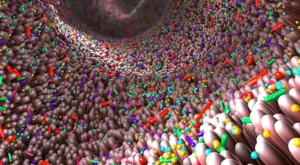By Ross Pelton, RPh, PhD, CCN
Until about ten years ago, scientists thought the human bladder was a sterile environment. In recent years, that view has shifted radically, which is opening up exciting new fields of research aimed at clarifying the role the microbiome plays in common urological diseases, especially those affecting children.
This exciting new research was published In the Feb. 22, 2018 online issue of Current Urology Reports. Michael Hsieh, MD who is director of the Clinic for Adolescent and Adult Pediatric Onset Urology at Children’s National Health System made the following statements regarding the effect the microbiome has on urologic diseases that affect children:
- Urinary Tract Infections (UTI): Decreased bacterial diversity or dysbiosis is associated with the incidence of common urinary tract infectins (UTIs). Possible future manipulation of the microbiome may help prevent and/or treat UTIs.
- Urge Urinary Incontinence (UUI): Certain specific strains of bacteria have been identified which are associated with increased incidence and severity of urge urinary incontinence. Studies indicate that a greater biodiversity of genitourinary bacteria is associated with reduced incidence and/or severity of urge urinary incontinence.
- Calcium Oxalate Stones: Scientists have discovered differences in the bacteria in the urinary tract compared to the bacteria found in calcium oxalate stones, which are the most common type of kidney stone. Also, a strain of bacteria names Oxalobacter formigenes has been found to metabolize/degrade oxalate and is associated with a 70% reduction in the risk of recurrent kidney stones.
Lead author Dr. Hsieh stated, “There is a growing appreciation for the role of diverse bacteria in contributing to improved health as well as triggering disease processes or exacerbating illness.”
Dr. Hsieh’s study: The Role of the Genitourinary Microbiome in Pediatric Urology: a Review, Current Urology Reports (2018).




